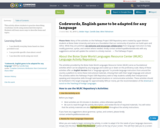
This activity allows students to practice describing vocabulary words using memorized descriptors. Students will learn more ways to describe items and topics.
- Subject:
- Arts and Humanities
- Languages
- Material Type:
- Activity/Lab
- Date Added:
- 10/10/2019

This activity allows students to practice describing vocabulary words using memorized descriptors. Students will learn more ways to describe items and topics.

¡McDonald's en español! Esta actividad está pensada para niveles 1 y/o 2. A partir del comercial del comercial se desarrolla la función auditiva. Se trata de identificar las palabras que faltan en los huecos.
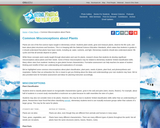
This article describes some common misconceptions that elementary students may have about plants. It also includes suggestions for formative assessment and teaching for conceptual change.
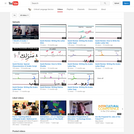
Critical Language Service offers playlists with video lessons that explain the material in Alif Baa, Al-Kitaab 1 (through lesson 11), and a series on Egyptian vocabulary. Videos designed for the Alif Baa series focus on stories to illustrate new vocabulary while the series designed for Al-Kitaab explains grammatical concepts introduced in the books, and demonstrate proper pronunciation. They also offer a playlist of 60 cartoon episodes in Arabic.
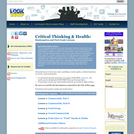
This kit provides teachers and other educators with the materials to help young children begin to understand the purpose of TV commercials (and advertising in general) in terms of selling intent, and to recognize the types of tricks that advertisers may use to make products look better than they really are. Specific lessons focus on foods groups and misleading nutritional messages commonly found in children's TV commercials, especially the "complete breakfast shot" and highly sugared pseudo-fruit snacks and beverages. Lessons are designed to address developmentally appropriate health standards, and many different commercials are provided so that children can discuss and practice what they have learned.

This project entails lessons an activities that allow students to study the history of Spanish and the countries in which it's spoken. The final product is a cultural celebration event in which students showcase their country's portfolios.
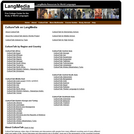
CultureTalk - Arab World features a very extensive selection of filmed interviews with people from different countries in the Arabic speaking world. While some interviews are in English, the vast majority are in Arabic. Translations and usually transcripts are provided for all non-English video clips. Topics include family, food, education, religious and cultural customs, work, art, sport, travel, etc. The regions covered are the Levant, North Africa, Egypt, and Mauritania, with an Iraqi section on the way.
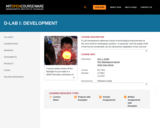
D-Lab Development addresses issues of technological improvements at the micro level for developing countries—in particular, how the quality of life of low-income households can be improved by adaptation of low cost and sustainable technologies. Discussion of development issues as well as project implementation challenges are addressed through lectures, case studies, guest speakers and laboratory exercises. Students form project teams to partner with mostly local level organizations in developing countries, and formulate plans for an IAP site visit. (Previous field sites include Ghana, Brazil, Honduras and India.) Project team meetings focus on developing specific projects and include cultural, social, political, environmental and economic overviews of the countries and localities to be visited as well as an introduction to the local languages.

D-Lab Development addresses issues of technological improvements at the micro level for developing countries—in particular, how the quality of life of low-income households can be improved by adaptation of low cost and sustainable technologies. Discussion of development issues as well as project implementation challenges are addressed through lectures, case studies, guest speakers and laboratory exercises. Students form project teams to partner with mostly local level organizations in developing countries, and formulate plans for an IAP site visit. (Previous field sites include Ghana, Brazil, Honduras and India.) Project team meetings focus on developing specific projects and include cultural, social, political, environmental and economic overviews of the countries and localities to be visited as well as an introduction to the local languages.

You've just had a plate of food set in front of you and you dive right in. What does it taste like? The adjectives you use to describe food can tell someone what it tastes like and if they want to try it as well. Adjectives like delicious and tasty will be learned in this seminar to describe a main dish or dessert.ACTFL StandardsCommunication: Interpretive Communication, Interpersonal CommunicationCultures: Relating Cultural Products to PerspectivesLearning TargetI can understand basic information on food labels.Habits of MindClassifyingCritical Thinking SkillApplying past knowledge to new situations

This is an English as a foreign language resource which can be used for learners who have a pre-intermediate level of English.The resource is a task based language activity on the topic of food.
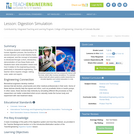
To reinforce students' understanding of the human digestion process, the functions of several stomach and small intestine fluids are analyzed, and the concept of simulation is introduced through a short, introductory demonstration of how these fluids work. Students learn what simulation means and how it relates to the engineering process, particularly in biomedical engineering. The teacher demo requires vinegar, baking soda, water and aspirin.

This lesson plan explores many ways animals help and support people including providing food, clothing, companionship, and service, as well as secondary benefits like soil conservation and fertility, and stabilizing farm businesses with diversification of risk. Lesson plan from the New Mexico Animal, Plant, and Soil Science Lesson Plan Library.
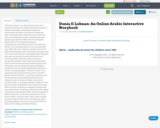
“Dunia Fi Lubnan” is an online Arabic interactive storybook developed by Alefb multicultural center for children with support from Qatar Foundation International through a Curriculum Development grant.
The storybook is a fully illustrated interactive story, and includes interactive comprehension quiz questions prompted by "Nahla the bee" in English, playful drills to test reading, writing and comprehension, and cultural games from which the learner can accumulate points to earn a surprise gift from Alefb. The story of Dunia, stretched out over 22 fully illustrated pages, tells a tale about a young girl who tries to overcome her fear of speaking Arabic. Along the way, users are exposed to several interactive self-correcting drills, audio files, cultural authentic documents tackling a wide variety of learning topics based on the themes and lessons within Dunia's story. Animations, sounds, glossaries pages and English translation tools all provide helpful hints and aid the learner in staying engaged. “Dunia Fi Lubnan” is an integrated educational material in that it uses both Modern Standard Arabic, الفصحى and colloquial العامية.
The interactive and multimedia components are designed in part to enhance regular curricula for teaching Arabic as a foreign language to children, teens and even adults, individually or in a classroom setting.
When all of the modules are completed, learners will have acquired new vocabulary, reinforced their reading, writing and comprehension skills, and been exposed to different practices, products and perspectives of the Arabic culture. Learners will be able to write a simple postcard using vocabulary from the following topics: Greetings, Feelings, Activities, Countries and Places, Colors, Food, Things and Family/Friends.

In this activity, the lab assistant will work as the server and the students will be guests at a restaurant. The students will practice ordering food, discussing what is wrong with the food, and paying for their meal.
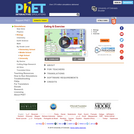
How many calories are in your favorite foods? How much exercise would you have to do to burn off these calories? What is the relationship between calories and weight? Explore these issues by choosing diet and exercise and keeping an eye on your weight.

This lesson is about the flow of energy in ecosystems. The setting is Plimoth Plantation, a living history museum in Plymouth, Massachusetts, USA, where students will learn about the first Thanksgiving meal in America, celebrated in 1621 by early American settlers and Wampanoag Indians. By examining this meal and comparing it to a modern day Thanksgiving celebration, students will be able to explore the way in which food energy moves and is transformed in an ecosystem. The learning goals focus on the movement of energy from one feeding level to the next within a food web, the way in which energy changes form, and the inefficiency of energy transfer, which in turn affects the availability of food energy for organisms at the highest feeding level. The lesson is directed at high school level biology students. Students should be familiar already with food webs, food chains, and trophic (feeding) levels. They should also be familiar with the general equations for photosynthesis (CO2 + H2O => C6H12O6) and cell respiration (C6H12O6 => CO2 + H2O), and understand the basic purpose of these processes in nature. This lesson can be completed during one long classroom period, or can be divided over two or more class meetings. The duration of the lesson will depend on prior knowledge of the students and on the amount of time allotted for student discussion. There are no supplies required for this lesson other than the downloadable worksheets (accessed on this BLOSSOMS site), paper and some glue or tape.
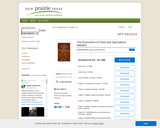
The Economics of Food and Agricultural Markets is written for applied intermediate microeconomics courses. The book showcases the power of economic principles to explain and predict issues and current events in the food, agricultural, agribusiness, international trade, and natural resource sectors. The field of agricultural economics is relevant, important and interesting. The study of market structures, also called industrial organization, provides powerful, timely, and useful tools for any individual or group making personal choices, business decisions, or public policies in food and agriculture industries.

Students use a recipe to prepare a hydrogel gummy snack, which has a similar consistency to that found in a Haribo® gummy product. They must convert the juice and gelatin-based recipe from US customary units to metric units with dimensional analysis conversion. After unit conversion, teams are given different gelatin quantities and design their gummy snacks. Once the candies have solidified, student groups compare the gummy snacks are for viscosity and taste. After a taste test, teams reflect on their experiment and brainstorm ways to iterate a better gummy recipe.

This resource is a video abstract of a research paper created by Research Square on behalf of its authors. It provides a synopsis that's easy to understand, and can be used to introduce the topics it covers to students, researchers, and the general public. The video's transcript is also provided in full, with a portion provided below for preview:
"Diseases like epilepsy and diabetes are linked to inflammation and oxidative stress which can be further complicated by persistent high blood glucose levels Drug-based treatments can help, but issues of tolerance, effectiveness, and compliance can complicate treatment The ketogenic diet (KD) reduces blood glucose and insulin, helping individuals to manage their condition But adherence to a strict KD can be difficult A recent study at the University of South Florida identified a promising possible alternative to KD adherence Using rodent models of epilepsy and glucose intolerance as well as non-disease models Researchers evaluated blood glucose levels after administration of exogenous ketone supplements Animals given exogenous ketones had lower blood glucose levels, both when resting and after exercise This treatment was effective for all of the disease models evaluated, and it also helped reduce blood glucose in rodents without pathology at different age ranges Further preclinical and clin.."
The rest of the transcript, along with a link to the research itself, is available on the resource itself.